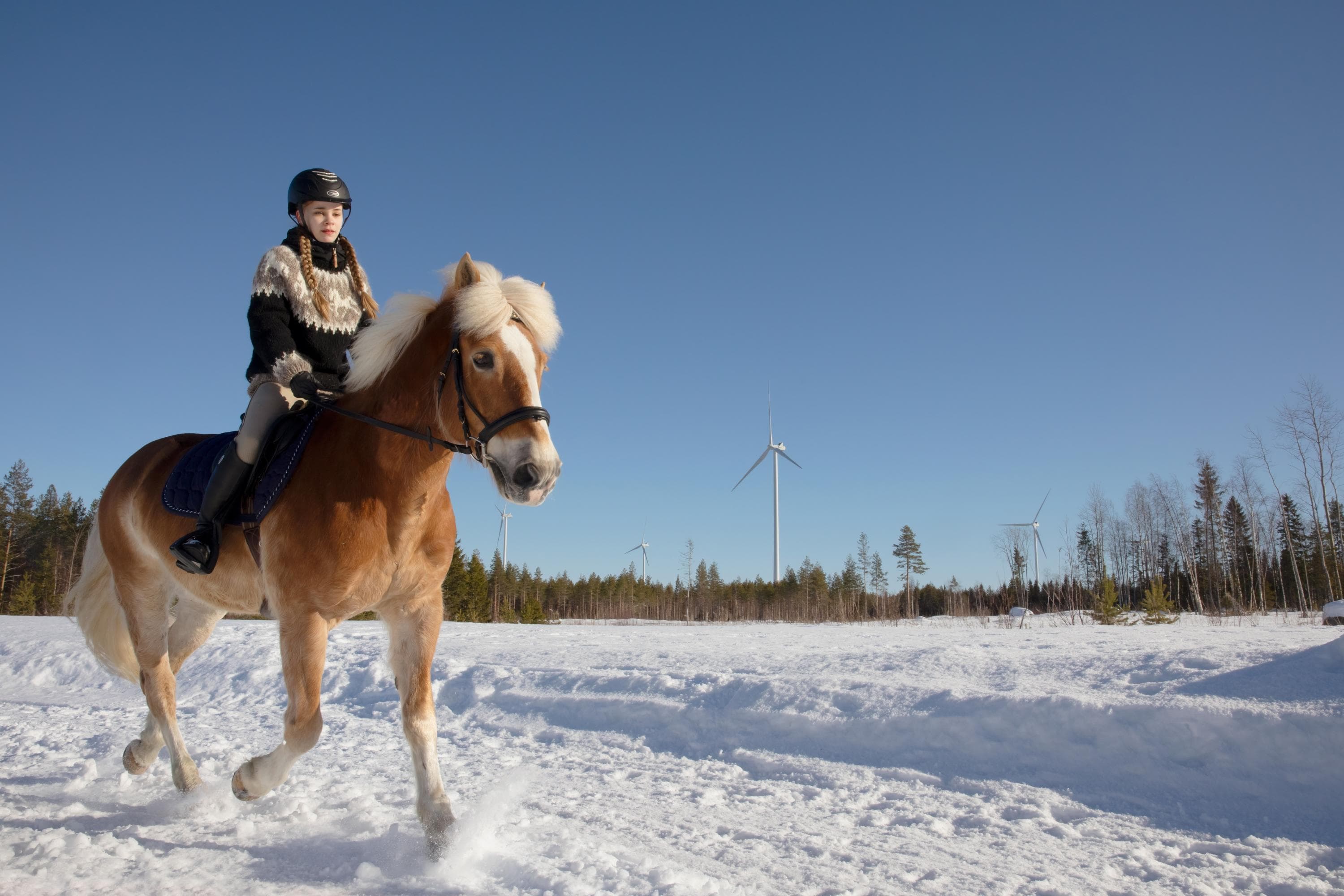Riding outdoors is a unique way of combining contact with a horse and the natural environment, both of which have been proven to reduce stress. Breaks or overnight stays close to nature in our magnificent national parks are the crowning glory of the experience.
Riding is a natural, equal and versatile form of exercise that is suitable for almost everyone. You can get a taste of riding in nature on short half-day or full-day treks under the guidance of experienced instructors and on a horse selected individually to suit the rider. Quiet horses are selected for inexperience riders, and the excursion is mainly conducted at walking pace, which is the safest speed for those new to horse riding. At walking pace, you can focus on admiring the scenery and let the horse follow its companions along familiar paths. Travelling at a faster pace is also possible for more experienced riders. A brisker pace requires better balance and more advanced body management skills as well as longer experience of communicating with a horse.
As a sure-footed animal, a horse is able to get through difficult terrain, and at a slow pace it can cover long distances. A horse is a companion for humans in every season, anywhere with paths or roads. No wonder horse riding is an ancient way of travel, and the companionship between horses and humans has long traditions in Finland. On horseback you are higher up than a walker and get to see the scenery from a new perspective!
Riding is a hobby that develops your sense of responsibility and teaches you to work together with a horse. Horses are always individuals, and a trusting relationship between the rider and the horse also makes riding safer and more enjoyable. If your interest develops, a number of different activities are available: jumping, dressage, eventing or trekking. More unusual equestrian hobbies include vaulting and mounted archery. Riding and horses are also used a lot in therapy and rehabilitation work.
Equipment
You do not necessarily need to buy a large selection of equipment to start horse riding. To get started, you need rubber boots or other longer boots with a small heel. Gym shoes and very thick shoes that can get stuck in the stirrups are not suitable for riding. You will also need non-slip gloves and stretchy trousers with no seams that would irritate your skin.
Wearing a helmet is mandatory, and beginners can usually borrow one from the riding stables. Every active rider inevitably falls off the horse sooner or later, which is why wearing an appropriate helmet is essential.
Trekking
A line of riders is following a trail across open country. Only an experienced rider should go trekking alone, while the safest option for beginners is to ride out in good company with guided groups. Destinations managed by Metsähallitus also offer great opportunities for guided trekking. However, the number of stables specialising in trekking is still relatively low in Finland, and the trail network remains undeveloped.
Riders are expected to have essential skills and balance before they go out trekking. These skills are required especially if you are aiming for a slightly faster pace. You can get the riding experience and instruction you need at a riding school that will teach you the basics: how to sit on a horse’s back, stop, use half-seat position and stay on the horse at gallop. Learning these skills takes a while, and riding as a hobby requires persistence. Some stables also offer cross-country riding on a lead rein, which means you do not need previous experience and can get a taste of riding in nature straight away.
Handling skills are an essential part of riding, and riding stables will teach these skills to anyone who wants to get into the saddle. This means that you build a connection and partnership with the horse while standing on the ground. These skills make anything you do with a horse more meaningful. Handling skills are a necessary part of communicating with horses and essential for horse welfare.
Horse riding is part of everyone’s rights as a rule, and individual riders do not usually need separate trails or permits. Riding may cause wear and tear on the terrain, however, which is why separate riding trails have been provided in protected and recreational areas. Outdoor trails intended for other purposes are poorly suited for riding, as the horses’ hooves break up their surface.
The landowner’s permission is usually needed for riding on private roads and guiding groups on treks. If you have a horse and you want to ride in the wild, you should first ask for the landowner’s permission. Everyone is allowed to ride on public roads. Particular care and skill in handling the horse are needed to ride on roads with traffic.
Read more
- Finnish Equestrian Federation (www.ratsastus.fi, in Finnish) is the central organisation of horse riding. The Federation’s website contains extensive information on horses and riding.
